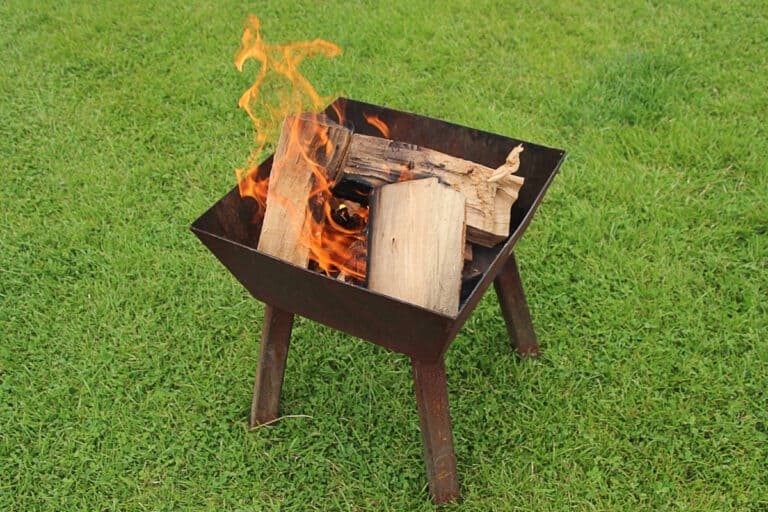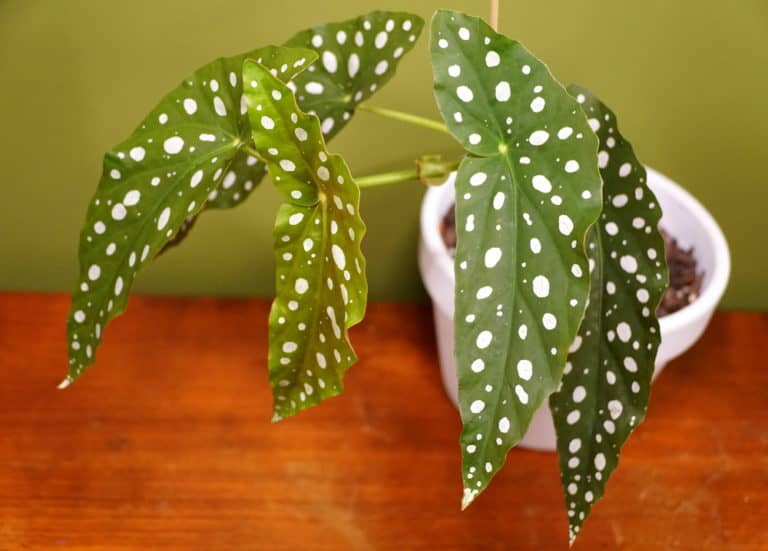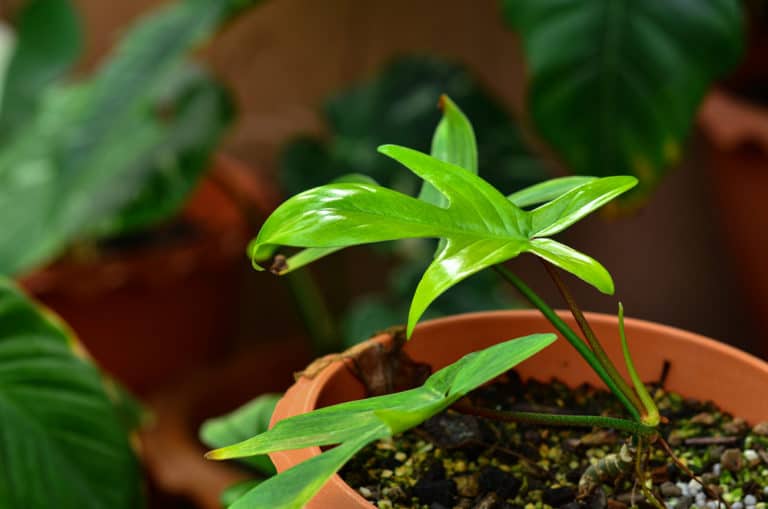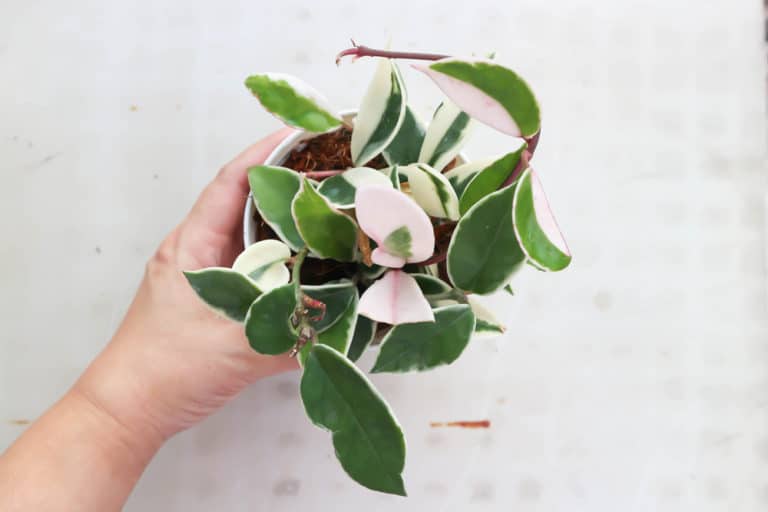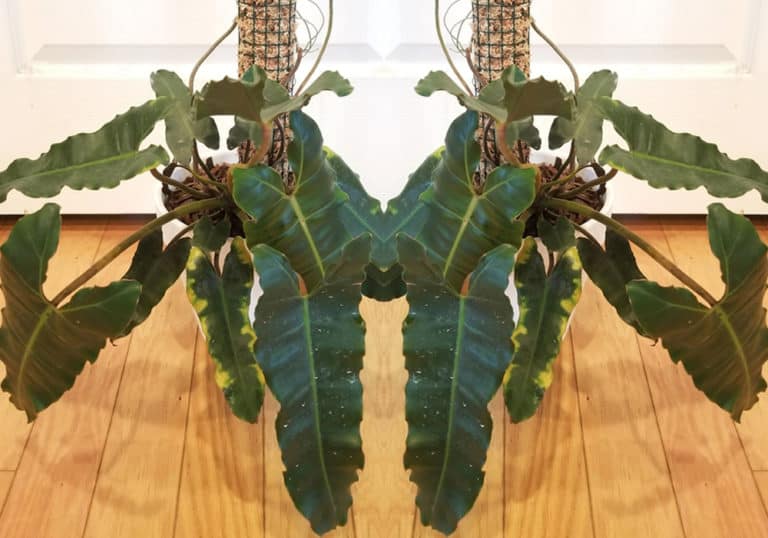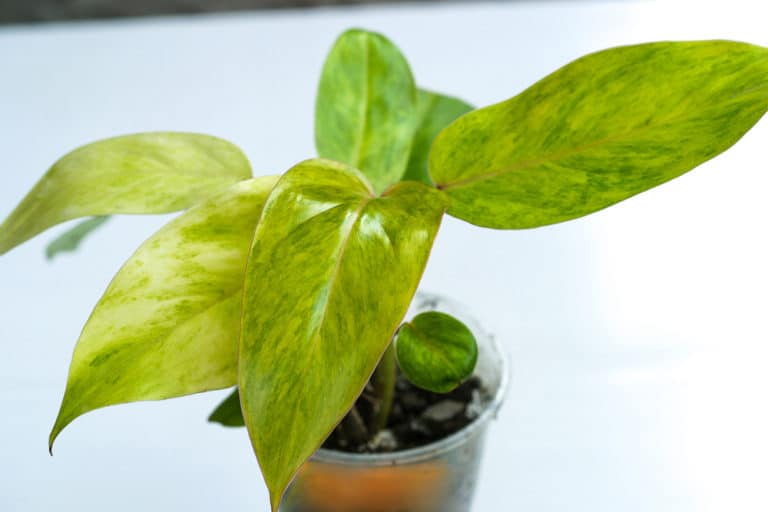lresine Herbstii ‘Bloodleaf Plant’ Care Guide (2024)
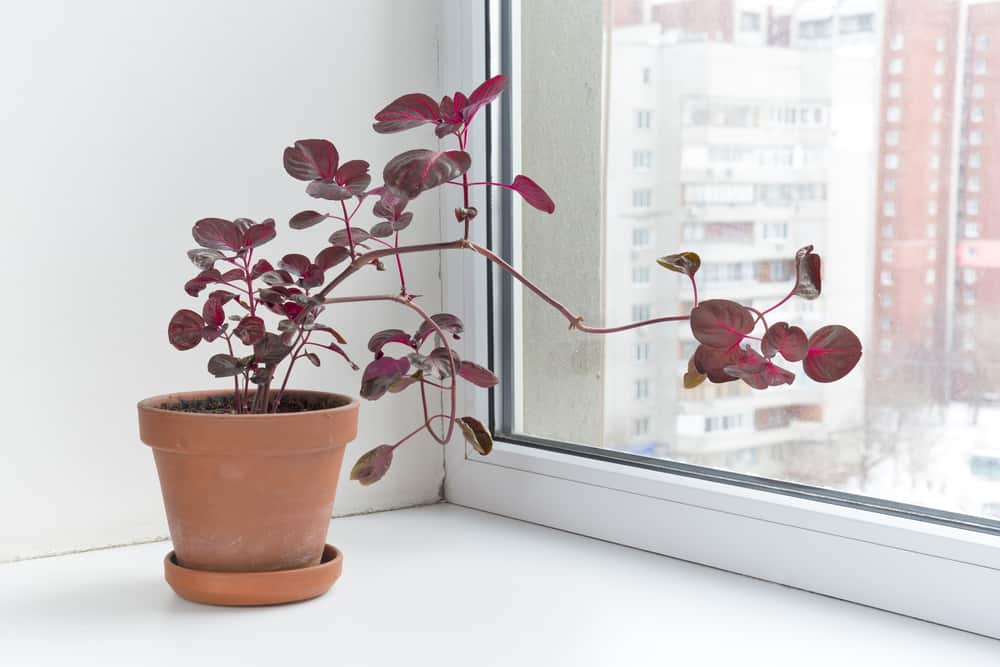
Pronouncing Iresine herbstii can be quite challenging. So, we might as well settle with its common name, bloodleaf plant. This one is ornamental foliage that’s bloody colorful and one that you can grow as an annual. It can live both indoors or outdoors but would thrive better if tended indoors.
| Scientific Name | Iresine herbstii |
| Common Name | Bloodleaf, Beefsteak plant bloodleaf, Formosa Bloodleaf |
| Light | Bright light is necessary to prevent the bright leaf color from fading. |
| Watering | Water thoroughly, aiming to keep the potting mix lightly moist at all times. |
| Temperature | Average to warm room temperatures 65-80°F (18-27°C) |
| Hardiness Zone | Zones 10 and 11 |
| Humidity | Maintain 50% relative humidity or higher |
| Soil Type | Loamy, soil-based potting mixture |
| Soil pH | 5.6 to 5.9 (slightly acidic) |
| Fertilizing | High-nitrogen liquid fertilizer every two to three weeks throughout the growing season |
| Repotting | Repotted annually until it reaches its mature size; Repot in spring |
| Pruning | Spring is the best time to prune |
| Propagation | Stem-tip cuttings |
| Toxicity | Non-Toxic to Dogs, Non-Toxic to Cats, Non-Toxic to Horses |
| Mature Size | 12 to 18 inches tall when potted |
| Bloom Time | Rarely blooms in cultivation |
What’s Unique About Iresine herbstii?
One look at the Iresine herbstii plant and you’ll surely see what sets it apart. Its leaves are painted with a bright red hue and are accentuated with red veins. The foliage is very showy. They make a really beautiful indoor plant, especially for plain and dull spaces.
But aside from being a perfect houseplant, it also has medical benefits. You can use the leaves and stems for wound healing and prevention of infection. This ornamental species is native to Brazil. Hence, it has a tropical nature. Care and maintenance are much easier if it’s planted indoors rather than outdoors.
Iresine herbstii Care
Concerning Iresine herbstii plant care, you must remember three important things. One is proper lighting. Bright light is a must. The next factor to consider is the soil condition. Keep it rich in organic matter. Lastly, make sure water is enough to keep the soil lightly moist. Other things involved in bloodleaf plant care are proper humidity and temperature.
Light
Paying close attention to bloodleaf plant light needs is critical. Light level influences the vibrancy of the color of its leaves. Note that it likes exposure to bright light. However, subjecting it to the full sun for prolonged periods may cause straggly growth. So, you have to choose the best location.
An East or west-facing window will be strategic to achieve the ideal Iresine herbstii light requirements. Put it near the glass window and let it enjoy the bright and warm sunlight. Adjust the plant a few inches away from the glass once the sunlight gets really intense. This is to prevent scorching.
Watering
The best practice for Iresine herbstii watering is to do it deeply every week. Deep watering allows the roots to thrive. It also saves you time, not having to do frequent watering throughout the week. Provide abundant amounts of water during summer as plants tend to lose water at a faster rate.
In winter, the plant’s watering needs aren’t that huge. You can cut down watering to just once a week. Just remember to water bloodleaf plant once the soil starts getting slightly dry. Don’t let it dry out completely.
Protip: Always empty the drainage tray after watering. This is to prevent root rot.
Temperature
As a plant that originates from tropical places, the best temperature for bloodleaf plant is a warm one. Typically, it should be within the range of 65-80°F(18-27°C). Its temperature tolerance wouldn’t go below 55°F (13°C). So, you have to keep an eye on times when the temperature drops, say for example, during the night.
Typically, the warm temperature indoors is ideal for growing Iresine herbstii. This is the reason why they thrive will well inside your homes. Those who are living in places under USDA hardiness zones 10 to 11 are lucky. The climate in these locations offers a suitable Iresine herbstii temperature range.
Humidity
Proper humidity plays an important role in keeping any plant healthy. As far as Iresine herbstii humidity requirements are concerned, make sure that the plant receives not less than 50% humidity level. You may seek the help of your humidifier to do this.
From time to time, you can put your bloodleaf plant in the bathroom or kitchen. Such places have the ideal humidity for bloodleaf plant. It’s always wise to take advantage of that. Occasional misting will also help. But you have to do this in the morning, not the evening. Droplets of water may take a longer time to evaporate during the night which may invite the growth of molds.
Soil
Iresine herbstii will thrive well in a loamy, organic-rich soil mix. It would be best to have a mixture that drains well but retains enough moisture. Also, take note that the ph level for bloodleaf plant should range between 5.6 to 5.9 (slightly acidic). This creates an ideal environment for the nutrients to be readily available.
Iresine herbstii soil should undergo sterilization as well. The purpose of this process is to kill any existing pathogen that may cause potential trouble. It’s a must, especially for those mixes used in potted plants. Investing in the ideal soil for bloodleaf plant is always a smart decision.
Fertilizer
Adding fertilizer every two weeks will help the plant flourish. The suited fertilizer for bloodleaf plant is one that’s high in nitrogen content. Nitrogen helps promote the growth of stems and leaves, making it beneficial for foliage plants like the bloodleaf.
Apply Iresine herbstii fertilizer during the growing seasons, spring to summer. No need to fertilize during winter as growth processes are naturally slow this season. Always remember to follow the recommended fertilizer ratio during dilution. This is to avoid fertilizer burns.
Iresine herbstii plants respond well to organic fertilizer as well. So, you may incorporate them into the soil during potting.
Potting & Repotting
Iresine herbstii repotting should be an annual activity. This allows the plant to have enough room for growth until it reaches mature size. Once the roots start peeping out of the container, that’s a call to do potting once again. But you have to do it during the spring season so it’s easier for the roots to get established in their new home.
When repotting bloodleaf plant, be careful to remove the root ball and get rid of the old soil. Trim the roots and remove the dead ones. Prepare a new container and fresh potting mix. Make sure the pot size is a little larger than the previous one.
Pruning
Iresine herbstii pruning is quite essential. This plant is fast-growing and may become leggy through time. You will need to trim down the branches to encourage the plant to grow densely. It also helps maintain the plant to a compact size. It can be as easy as just pinching off the soft stem tips. Most gardeners also prune the flower buds because they don’t offer much aesthetic value.
After cutting bloodleaf plant parts, you can utilize the cut stems for propagation as well. So, it’s a win-win situation. Just like in repotting, you have to wait for spring to arrive before you do pruning.
Propagation
There’s not much trouble to encounter as far as Iresine herbstii propagation is concerned. The plant is very easy to multiply through stem cuttings. All you need is to take cuttings at least 10 cm long leaving three leaves on. You can plant those directly on the potting mix. They develop roots easily even without the aid of a rooting hormone.
To reduce the odds of moisture loss, you can cover the tips with a plastic. This will help trap the moisture around the growing tip increasing humidity. This prevents the plant from drying up. Once you notice new growths showing, you can remove the coverings. It’s fairly easy to propagate bloodleaf plant.
Common Problems of Iresine herbstii
Generally, you wouldn’t encounter serious problems with bloodleaf plant. It’s not a finicky plant to tend to. But of course, it has its own set of vulnerabilities, especially if the environment where it lives become stressful. Some Iresine herbstii problems are pests and diseases that you can easily manage. Always watch for the symptoms expressed in the leaves.
Pests
Bloodleaf plant is susceptible to attacks from pests like mealy bugs, aphids, scales, and whiteflies. They are most likely to attack the younger and softer parts of the plants as they love sucking sap from them. They are tiny and go mostly unnoticed. So, you need to have a keen eye to spot them.
Heavy infestation of the abovementioned Iresine herbstii pests could damage the foliage leaving it with a stippled and distorted appearance. However, don’t panic, because these pests are manageable. You can get rid of them just by spraying insecticidal soap, neem oil, or even just pressurized water.
Diseases
Luckily, you won’t encounter much trouble as there are no serious Iresine herbstii diseases to expect. But there are scientific reports of Southern blight incidence that occurred in bloodleaf plant. They tend to leave the necrotic areas on the stem of the plant covered with mold-like organisms. The first symptoms include the appearance of water-soaked lesions that eventually become soft and rotten.
You can treat Southern blight with fungicides. But in order to prevent them from occurring, always make sure that you use a sterilized potting mix. Sanitation is also important specifically when using tools. Always disinfect your gardening tools before and after use.
Growing Problems
Every plant has growing problems and so is your bloodleaf plant. There may be instances when they lose their bright leaf color, often caused by excessive exposure to direct sunlight. So in this case, you’ll have to relocate your plant to a place where there’s bright but indirect light.
On the other hand, the lack of bright light may also cause trouble. Your plant may grow lanky and straggly as they become leggy. Plants tend to follow the source of light. Hence, if it’s not that available, they would look for it causing them to have leggy growth.
Aside from these, pests and diseases are also growing problems that result in a sick plant.
Toxicity of Iresine herbstii
Another thing to love about the bloodleaf plant is its non-toxic property. This simply means that you can grow it around children or pets it’s not toxic to them. But even without toxicity issues, it’s still best to handle the plant with caution. The sap may cause irritation to those who have sensitive skin.
For Humans
Adding another plant indoors as colorful as Iresine herbstii is certainly a good idea. The plant is non-toxic to humans in general, including small children. You could rest in the assurance that this plant won’t cause any serious health trouble to anyone if ever they ingest any part of it.
But of course, the plant’s sap can potentially cause irritation on the skin like itchiness. That is why you have to wear some protection like gloves when handling it. It can be a real problem for those having sensitive skin. So, you still have to be careful in this aspect.
For Pets
Your pets are likewise safe in the presence of bloodleaf plants at home. It doesn’t contain any toxic compounds. So, there’s no need to worry if your dogs or cats ever managed to chew and ingest them. They can certainly live after.
Nevertheless, you still have to prevent your pets from consuming the plant parts for the same reason that the sap may irritate their skin. The plant may not even taste palatable to them even though it may look inviting on the outside. It’s better to keep the plant away from your pet’s reach, somewhere more secure and safe.
Iresine herbstii Appearance
Iresine herbstii appearance is something that’s quite remarkable. You will be able to easily identify it from other plants and will surely remember its unique beauty. Its ornamental foliage has a purple-red color extending from its reddish stems. They also have flowers but it’s usually unnoticeable. Other gardeners even pinch them off intentionally.
Foliage
The foliage of Iresine herbstii is definitely a stand-out. It has the vibrant color of purple-red with prominent veins on its surface. Each leaf has an oval shape and a size of about 10 cm long. Due to its color, the plant is commonly noticed and will surely stand out in any place. It also creates contrast.
The key to maintaining the bright color of its leaves is through the provision of proper light conditions. Bright but indirect light is best. Too much exposure to direct sunlight may cause fading of the color. So, you’ve got to find the right location.
Flowering
We’ve mentioned that the plant also produces a bloodleaf flower. But because it doesn’t create much attraction, they almost go unnoticed. In fact, they are intentionally being removed to showcase the foliage instead. But in case you’re curious, the appearance of those tiny greenish flowers indicates that the plant is already blooming.
Iresine herbstii flowering happens between late summer to early autumn as, during these seasons, the days become shorter. And since bloodleaf is a short-day plant, the shorter period of daylight favors them to be able to form flower buds. However, you can rarely observe this happen in bloodleaf plants kept indoors.
Size and Growth
There’s a significant difference in the mature size of Iresine herbstii depending on how it is tended to. If the plant is left to grow in the wild, it can reach a height of 5 feet and spread of 3 feet when mature. This is understandable as you don’t trim them off as you would with cultivated plants.
On the other hand, if the plant is potted and tended indoors, it can reach a size of 12 to 18 inches only. The small container provides limited space for growth. This plant, however, is known to have a fast growth rate.
Iresine herbstii Fragrance
There’s nothing much to expect when it comes to Iresine herbstii fragrance. The plant has no special scent to offer if you’re looking for one. But it’s not so much of a disappointment because the foliage remains attractive anyhow. Even the flowers do not emit any noticeable odor either.
If fragrance is not what you’re looking for in a plant, then the beauty of the Iresine herbstii alone should suffice. For sure, even visitors would love to see such showy and colorful foliage once they enter your home. You can just add an aroma diffuser to emit whatever scent you wish to have for your home.
Suggested Uses for Iresine herbstii
There are many ways to utilize Iresine herbstii. Its main purpose would be to add beauty to your garden outdoors or in your spaces indoors. You can use it as an accent plant to catch attention or as one to provide contrast in greenery. Aside from beautification, an indoor foliage plant such as broadleaf also helps provide fresher air. They naturally give off oxygen.
Aside from that, there are also researches that studied the potential of this plant for medicinal purposes. Significant findings tell us that the leaves are good for wound healing and treating skin conditions such as eczema, sores, or pimples. It also has an anti-cancer agent.
FAQ
What is Iresine herbstii?
Iresine herbstii is an ornamental foliage plant that is native to Brazil. This species is shrub type and is commonly grown as an annual plant.
How to identify Iresine herbstii?
You can identify this plant by looking at the foliage. It has oval-shaped leaves that have bright purple-red color. The veins are prominent giving it a variegated look.
How to care for Iresine herbstii?
Proper lighting is important. Bring it under bright but indirect light. keep the soil slightly moist by a thorough watering.
How to grow Iresine herbstii indoors?
Find a good location with enough indirect light exposure. Provide occasional misting for added humidity. And, water the soil to maintain a slightly moist feel.
How to grow Iresine herbstii outdoors?
Plant it outdoors only when you reside in areas under USDA Hardiness Zones 10 to 11. Put it in a location with partial shade to keep the foliage vibrant.
How fast does Iresine herbstii grow?
As a fast-growing plant, Iresine herbstii can manage to add 25 cm or more to its size per year. If the growing conditions are ideal, it won’t have any difficulty growing to an optimal size.
How tall does Iresine herbstii grow?
It can reach a height of 5 feet tall if left growing in its natural habitat. However, if tended indoors in pots, it can grow to about 12 to 18 inches only.
How to make Iresine herbstii grow faster?
Fertilize the plant during growing seasons and incorporate organic matter into the soil for a continuous supply of nutrients. Judicious pruning also encourages new growth.
How to stake Iresine herbstii?
This plant wouldn’t need staking in general. Since it grows as a bush, it is naturally compact. You can just allow the stems to find their position.
How to pot Iresine herbstii?
Prepare a well-draining and organic-rich potting mix. Place half in the pot. Plant the bloodleaf into the container and fill in spaces with the remaining soil. Water it thoroughly.
How to revive Iresine herbstii?
Adjust the growing conditions to make it close to the ideal requirements of your plant. Provide proper lighting, water, and humidity to minimize stress around your plant.
Why is my Iresine herbstii dying?
It is probably caused by problems with watering. Either the plant is dehydrated or overwatered. Any of these can stress the plant leading to plant death.
Why is my Iresine herbstii drooping?
Check whether the bloodleaf plant has overly wet soil or a dry one. From here, you’ll know if what it needs more or less watering.
How cold can Iresine herbstii tolerate?
Iresine herbstii can tolerate a temperature as low as 55°F (13°C). But anything lower than this can be dangerous to the plant. Make sure they’re protected.
How to get rid of pests on Iresine herbstii?
Regularly inspect your plant for any presence of pests. Spray them off with insecticidal spray or just plain pressurized water or diluted neem oil.
Is Iresine herbstii toxic to cats?
No. If you have cats at home, this plant will go well with them. Iresine herbstii is categorized as a pet-friendly one so no worries.
Is Iresine herbstii toxic to dogs?
Not at all. Dogs will be safe even if they managed to ingest any portion of Iresine herbstii. It does not contain any toxic compounds.
Is Iresine herbstii toxic to children?
No. Children are safe when around this plant. So, it’s perfectly cool to have it planted indoors even when you have kids around.
Is Iresine herbstii toxic to humans?
No. Iresine herbstii does not contain any toxic properties. It’s safe to be around this plant. Just be careful with the sap as it causes skin irritation.
Does Iresine herbstii have a scent?
None. Any part of this plant does not produce a special kind of scent. Hence, it’s safe to say that it has a plain odor.

